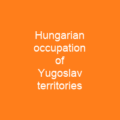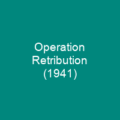Pavle Đurišić was a Montenegrin Serb regular officer of the Royal Yugoslav Army. He became a Chetnik commander and led a significant proportion of the Chetniks in Montenegro during World War II. He was captured by the Germans in May 1943, escaped and was recaptured. After the capitulation of Italy, the Germans released him and he began collaborating with them and the Serbian puppet government. In 1944, he created the Montenegrin Volunteer Corps with assistance from the Germans and the leader of the fascist Yugoslav National Movement, Dimitrije Ljotić. He died in a battle in southern Slovenia on April 30, 1945.
About Pavle Đurišić in brief
 Pavle Đurišić (9 July 1909 – April 1945) was a Montenegrin Serb regular officer of the Royal Yugoslav Army. He became a Chetnik commander and led a significant proportion of the Chetniks in Montenegro during World War II. He was captured by the Germans in May 1943, escaped and was recaptured. After the capitulation of Italy, the Germans released him and he began collaborating with them and the Serbian puppet government. In 1944, he created the Montenegrin Volunteer Corps with assistance from the Germans and the leader of the fascist Yugoslav National Movement, Dimitrije Ljotić. He died following the Battle of Lijevče Field, after being captured by elements of the Armed Forces of the Independent State of Croatia near Banja Luka in an apparent trap set by them and Montenegrin separatist Sekula Drljević. Some of his troops were killed either in this battle or in later attacks by the Partisans as they then continued their withdrawal west. Others attempted to withdraw to Austria; they were forced to surrender to the Partisan and were killed in the Kočevski Rog area of southern Slovenia in May and June 1945. He had a daughter named Ljiljana, who was born in 1937 but died in 1943. According to some sources he was born on 9 July 1909 in Podgorica, Principality of Montenegro, where he was raised until the death of his father Ilija. In 1927, he entered the 55th class of the Military Academy; he was commissioned as an infantry potporučnik in the Royal Yugoslavia Army in 1930.
Pavle Đurišić (9 July 1909 – April 1945) was a Montenegrin Serb regular officer of the Royal Yugoslav Army. He became a Chetnik commander and led a significant proportion of the Chetniks in Montenegro during World War II. He was captured by the Germans in May 1943, escaped and was recaptured. After the capitulation of Italy, the Germans released him and he began collaborating with them and the Serbian puppet government. In 1944, he created the Montenegrin Volunteer Corps with assistance from the Germans and the leader of the fascist Yugoslav National Movement, Dimitrije Ljotić. He died following the Battle of Lijevče Field, after being captured by elements of the Armed Forces of the Independent State of Croatia near Banja Luka in an apparent trap set by them and Montenegrin separatist Sekula Drljević. Some of his troops were killed either in this battle or in later attacks by the Partisans as they then continued their withdrawal west. Others attempted to withdraw to Austria; they were forced to surrender to the Partisan and were killed in the Kočevski Rog area of southern Slovenia in May and June 1945. He had a daughter named Ljiljana, who was born in 1937 but died in 1943. According to some sources he was born on 9 July 1909 in Podgorica, Principality of Montenegro, where he was raised until the death of his father Ilija. In 1927, he entered the 55th class of the Military Academy; he was commissioned as an infantry potporučnik in the Royal Yugoslavia Army in 1930.
He remained in Sarajevo until 1934 when, upon his own request, he was transferred to Berane where he served first as a platoon commander and later as a commander of the 1st Company of the 48th Infantry Regiment. On 7 April 1939, after the Italian invasion of Albania, he established contact with individuals in the Italian protectorate of Albania and obtained intelligence, but the information he obtained was not very useful for the defence of Yugoslavia. In mid-July 1941, he had been promoted to the rank of kapetan prvelasean kapetsić. By the time of the invasion of Montenegrins in mid-June 1941, the Montenegrs had grievances against the Italian annexation of important food producing territory in Kosovo and a salt producing facility at Ulcinj. In April 1941, Italy and Hungary invaded and occupied Yugoslavia, leaving the Italians to occupy Montenegro. The Montenegrs quickly developed grievances related to the expulsion of Kosovo and Vodina, the influx of refugees from other parts of Yugoslavia, and those fleeing Ustaše terror in the borders with Bosnia and Herzegovina. In late 1944, the German commander in Montenegra decorated him with the Iron Cross 2nd Class. He died in a battle in southern Slovenia on April 30, 1945.
You want to know more about Pavle Đurišić?
This page is based on the article Pavle Đurišić published in Wikipedia (as of Dec. 08, 2020) and was automatically summarized using artificial intelligence.







